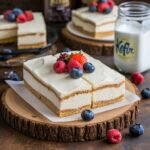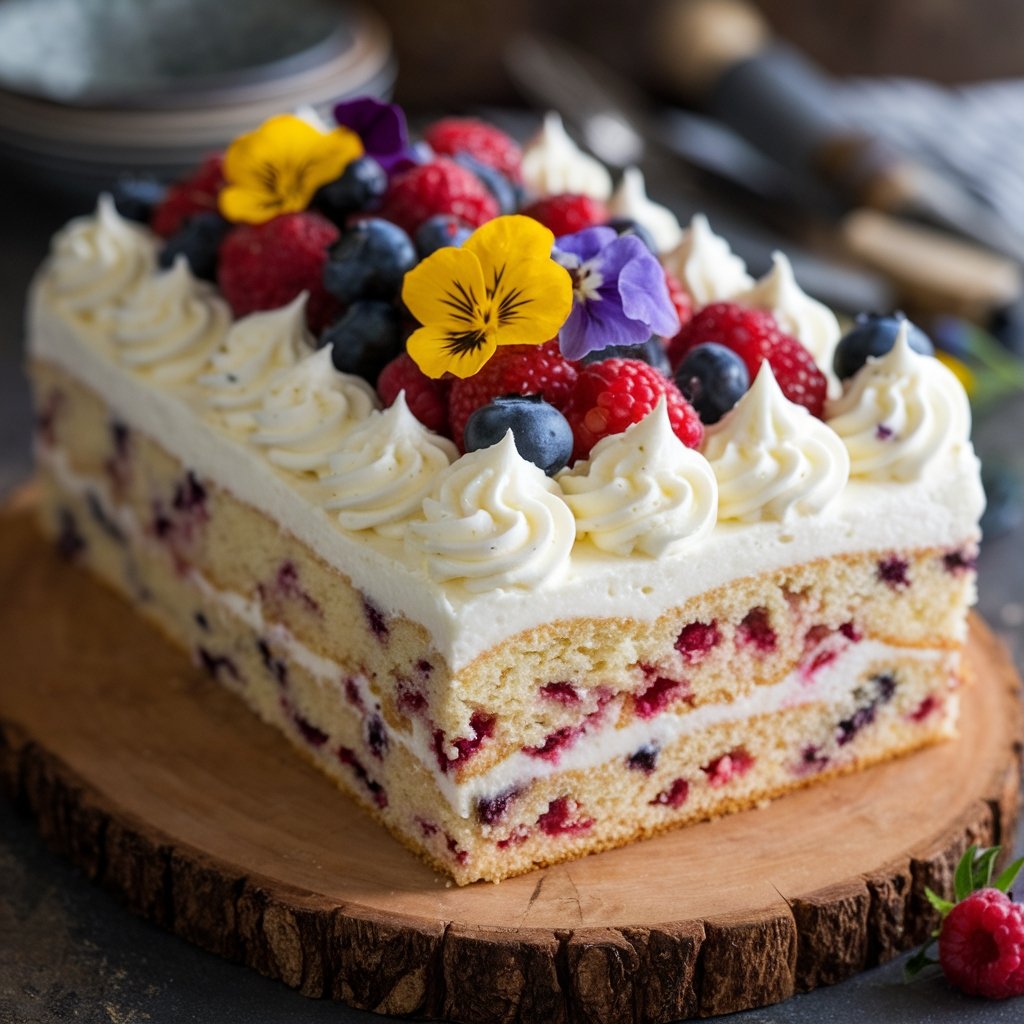In the world of baking, there’s always room for innovation, and kefir sheet cake is the perfect example of a classic recipe elevated by a trendy, nutritious ingredient. Kefir, a fermented dairy product packed with probiotics, has taken center stage in the health and wellness community. But did you know it’s also a secret weapon for creating irresistibly moist and tender cakes?

Easy Kefir Sheet Cake Recipe
This kefir sheet cake is a moist, tangy, and flavorful dessert that is perfect for any occasion. It uses the natural creaminess and slight tartness of kefir to create a soft crumb and pairs it with a luscious frosting. Easy to make and budget-friendly, this recipe is a crowd-pleaser for family gatherings or parties.
Servings 14 servings
Calories 280kcal
Cost $10–15
Equipment
- Large mixing bowl
- Medium mixing bowl
- Whisk or electric mixer
- Rubber spatula
- Measuring cups and spoons
- 9x13-inch sheet cake pan
- Cooling rack
Ingredients
For the Cake:
- 2 cups All-purpose flour (sifted for a lighter texture)
- 1 ½ tsp Baking powder
- 1 tsp Baking soda
- ½ tsp Salt
- ½ cup Unsalted butter (softened, room temperature)
- 1 cup Granulated sugar
- ½ cup Brown sugar (lightly packed for added moisture)
- 2 Large eggs (room temperature)
- 1 tsp vanilla extract
- 1 cup Plain kefir (use full-fat or low-fat, depending on preference)
For the Frosting (Optional Cream Cheese Frosting):
- 8 ounces Cream cheese (softened)
- ½ cup Unsalted butter (softened)
- 2 cups Powdered sugar (sifted to avoid lumps)
- 1 tsp Vanilla extract
- 1–2 tbsp Kefir (for tanginess and spreadable consistency)
Optional Toppings:
- Fresh berries (e.g., blueberries, raspberries, or strawberries)
- Chopped nuts (e.g., walnuts or pecans)
- Shredded coconut
Instructions
Step 1: Prepare the Oven and Pan
- Preheat the oven to 350°F (175°C).
- Grease a 9x13-inch sheet cake pan with butter or non-stick spray, then dust lightly with flour to prevent sticking.
Step 2: Mix the Dry Ingredients
- In a medium mixing bowl, whisk together the flour, baking powder, baking soda, and salt.
- Set aside.
Step 3: Cream Butter and Sugar
- In a large mixing bowl, use a whisk or an electric mixer to cream together the softened butter, granulated sugar, and brown sugar until light and fluffy (about 2–3 minutes).
Step 4: Add Eggs and Vanilla
- Beat in the eggs, one at a time, ensuring each egg is fully incorporated before adding the next.
- Mix in the vanilla extract.
Step 5: Incorporate Kefir
- Gradually alternate adding the dry ingredients and the kefir to the wet mixture. Start with ⅓ of the dry ingredients, mix until just combined, then add ½ of the kefir. Repeat this process until everything is incorporated, being careful not to overmix.
Step 6: Bake the Cake
- Pour the batter into the prepared sheet pan and spread it evenly with a spatula.
- Bake in the preheated oven for 25–30 minutes, or until a toothpick inserted into the center comes out clean.
Step 7: Cool the Cake
- Remove the cake from the oven and place the pan on a cooling rack. Allow the cake to cool completely before frosting.
Notes
- Kefir Substitutions: If kefir is unavailable, you can use buttermilk or a mixture of ¾ cup plain yogurt and ¼ cup milk.
- Gluten-Free Option: Replace all-purpose flour with a gluten-free baking blend. Ensure other ingredients, like baking powder, are certified gluten-free.
- Storing the Cake: Store the frosted cake in an airtight container in the refrigerator for up to 4 days. Bring to room temperature before serving.
- Make It Ahead: The unfrosted cake can be baked a day in advance and stored at room temperature, covered tightly. Frost just before serving.

